
We discover an unforgettable dish in the city that boasts the highest number of ramen joints per 100,000 people in Japan.
Whenever you travel around Japan, you get to experience new sights…and new flavours, thanks to an abundance of regional specialties that differ from prefecture to prefecture.
Up in the prefecture of Tochigi, for example, there’s a specialty called Sano Ramen, which is a famous dish in Sano City. It’s so beloved that locals have their own favourite joints that serve up the specialty, and when our reporter Masanuki Sunakoma recently visited, he was keen to seek out one of these places so he could enjoy the dish like a local.
As we’ve seen in the past, one of the best ways to unearth such locally guarded secrets as a great eatery is to hop in a taxi and ask the driver to take you to a place they’d recommend, so that’s exactly what Masanuki did, sliding into a cab and saying to the driver:
“Hey taxi driver, take me to the best Sano Ramen in Sano!”
The driver didn’t miss a beat with his reply, saying:
“I know a place that’s good, and I like the gyoza okoge there too.”
So off they went, with the two of them chatting about ramen on the way, where Masanuki learned that Sano boasts the highest number of ramen stores per 100,000 people in Japan. As they drove along the roads, Masanuki saw loads of restaurant signboards with “Sano Ramen” written on them, and the driver told him there were around 150 ramen joints in the city.
“On weekends, there are even traffic jams in front of the most popular ramen restaurants,” said the driver.
▼ It didn’t take long for them to arrive at their destination — Tamuraya, a ramen shop that’s said to be incredibly famous in the local area.
It looked like the driver had taken Masanuki to the best of the best Sano ramen joints, and when he stepped inside and waited to be seated, Masanuki spotted the gyoza okoge that the driver had spoken about earlier.
He was surprised to find that the gyoza okoge looked more like rice crackers than gyoza dumplings, and he made a mental note to pick up a pack for 330 yen (US$2.42) when paying for his meal later at the register.
After a five-minute wait, Masanuki was seated and he immediately picked up a menu to peruse the Sano ramen on offer. The most popular item (“人気No.1”) was the Seasoned Egg Char Siu Noodles for 1,220 yen.
The combination of melt-on-the-tongue char siu and soft boiled egg was said to be irresistible, so Masanuki wasted no time in ordering it.
It didn’t take long for his order to arrive, and it looked just as mouthwatering as it did on the menu. The broth was clear — a signature of Sano Ramen — and the mound of noodles was topped with a large piece of roasted pork fillet, a bright seasoned egg, bamboo shoots, and green onions.
▼ It looked simple but beautiful at the same time.
Taking a sip, Masanuki was delighted to taste the flavour and sweetness of the char siu, which had melted into the smooth broth. It was so delicious he couldn’t help but go in for another spoonful, and as he did, he recalled that Sano City is home to Izuruhara Benten Pond, which was selected as one of Japan’s 100 best waters by the Ministry of the Environment.
▼ Where there’s famous water, there’s famous ramen, as the water is said to make the broth extra delicious.
The noodles are hand-made according to the “aodakeuchi” technique, which involves stretching the kneaded wheat with “aodake” (“green bamboo”). This gives the noodles a smooth and chewy texture, and varying amounts of thickness, which, when combined with the contrasting smoothness of the broth, creates an unusual texture on the tongue.
▼ Some people say the noodles in Sano ramen “dance” when you put them in your mouth.
The pork belly char siu was plentiful, but also creamy, soft and juicy. The whole meal was delicious, hearty and filling, yet oddly refreshing at the same time, as the transparent soup imparted a clean aftertaste.
After slurping up his last mouthful, Masanuki understood why the taxi driver had recommended this joint, as he was able to fully enjoy the unique charms of Sano ramen in one sitting.
▼ Plus, he now had another specialty to try — the mysterious gyoza okoge.
“Okoge” is the word used to describe the slightly burnt, but still totally edible, bits of rice at the bottom of a pot when it’s cooked, and these gyoza wrappers looked to be covered in rice and fried, giving them that same crispy yet chewy texture.
Taking a bite, Masanuki’s eyes rolled back in delight — these were utterly ah-maz-ing! The gyoza dumplings were full of umami, flavoured with a hint of seasoning, and the light and crispy texture was so good Masanuki couldn’t stop eating them.
Masanuki only wished he’d bought more of them, so if you get a chance to visit Tamuraya, be sure to stock up on these after enjoying your delicious Sano ramen.
Thanks for another sterling recommendation, Mr Taxi Driver! We can’t wait to see what tasty delights our next local cab driver will introduce us to!
Restaurant information
Tamuraya / 田村屋
Address: Tochigi-ken, Sano-shi, Asanuma-cho 780-3
栃木県佐野市浅沼町780-3
Open 11 a.m.-3 p.m., 5 p.m.-9 p.m. (weekdays) 11 a.m.-9 p.m. (Sat, Sun and holidays)
Closed Wednesdays (the following day if Wednesday is a public holiday)
Website
Photos ©SoraNews24
● Want to hear about SoraNews24’s latest articles as soon as they’re published? Follow us on Facebook and Twitter!
[ Read in Japanese ]

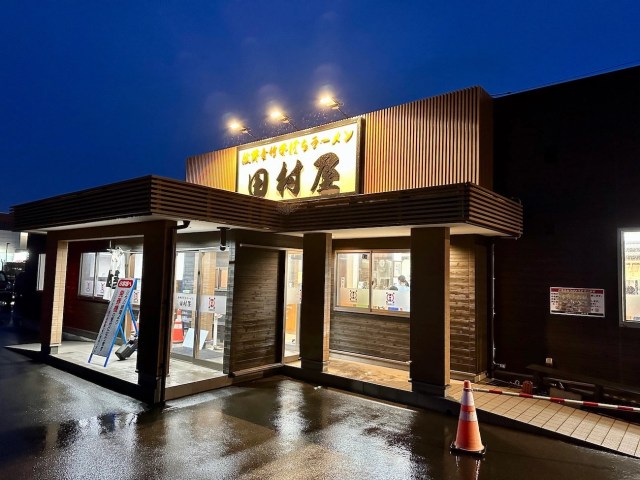
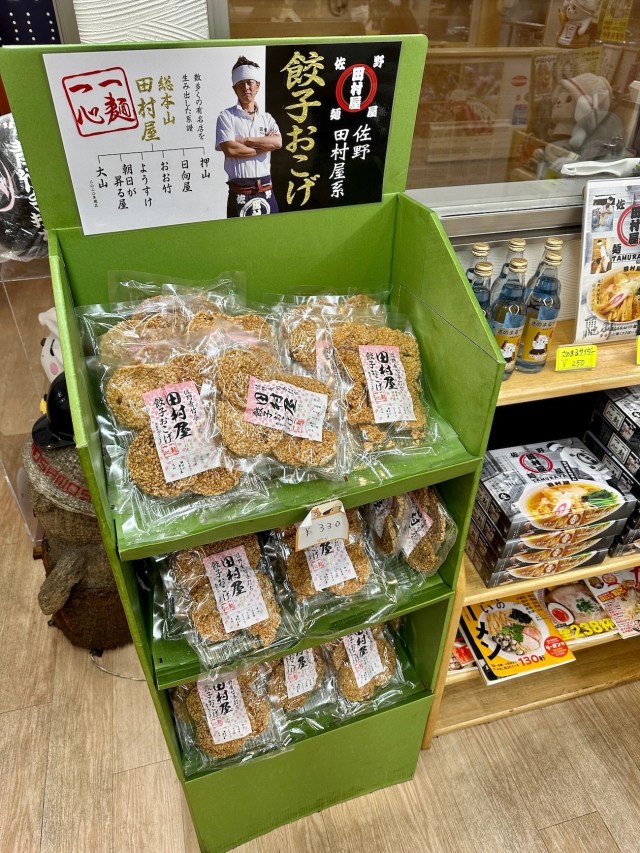

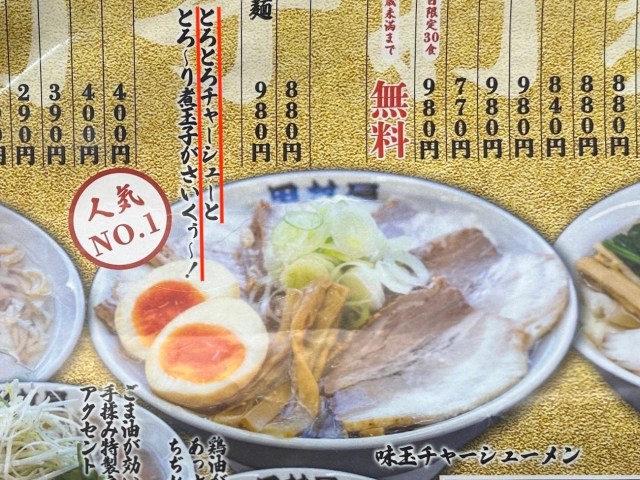
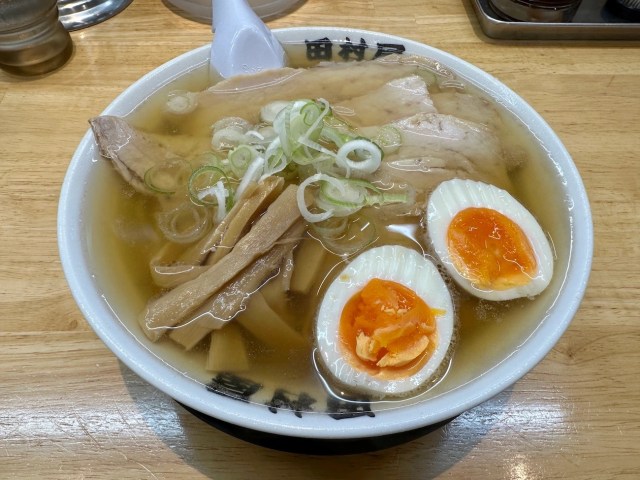
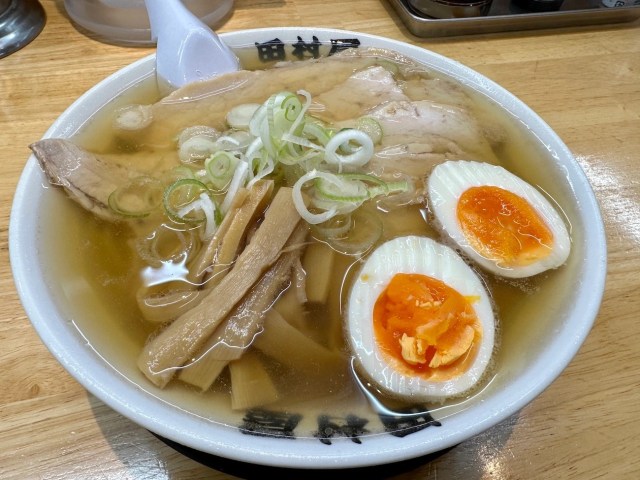

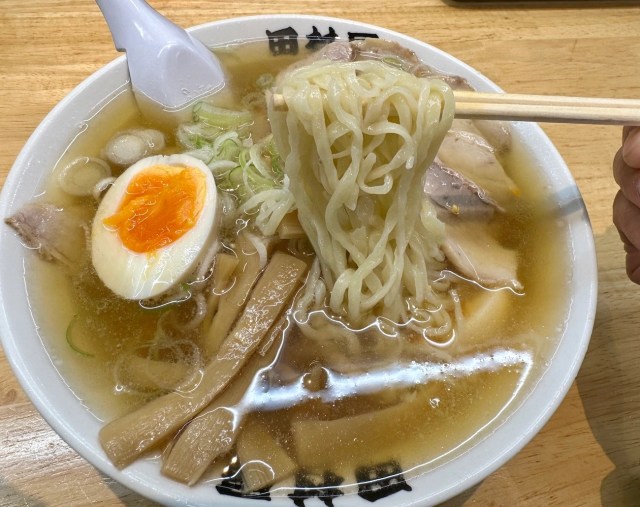

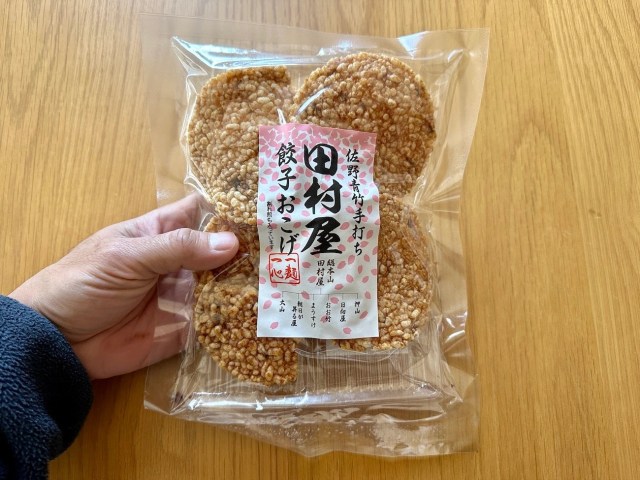
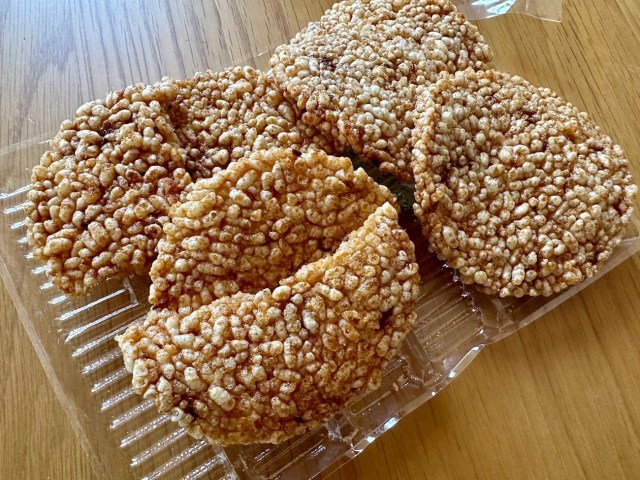
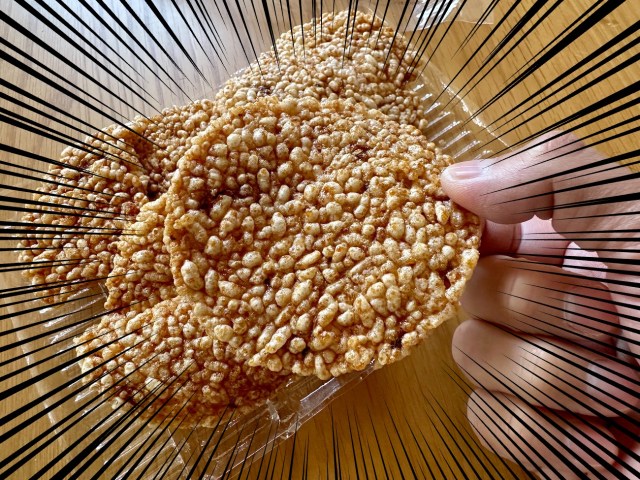
 Hey, Japanese taxi driver! Take us to a great restaurant in Utsunomiya
Hey, Japanese taxi driver! Take us to a great restaurant in Utsunomiya “Hey, Japanese taxi driver, take us to the best Okinawan restaurant in Naha!”
“Hey, Japanese taxi driver, take us to the best Okinawan restaurant in Naha!” “Hey, Japanese taxi driver, take us to the best seafood restaurant in Noboribetsu!”
“Hey, Japanese taxi driver, take us to the best seafood restaurant in Noboribetsu!” “Hey, Japanese taxi driver, take us to the best takoyaki in Osaka!”
“Hey, Japanese taxi driver, take us to the best takoyaki in Osaka!” “Hey, Japanese taxi driver, take us to the best Sapporo ramen place!” – Things don’t go as planned
“Hey, Japanese taxi driver, take us to the best Sapporo ramen place!” – Things don’t go as planned Ramen restaurant’s English menu prices are nearly double its Japanese ones, denies discriminating
Ramen restaurant’s English menu prices are nearly double its Japanese ones, denies discriminating What makes a good boss in Japan? Workers sound off in survey
What makes a good boss in Japan? Workers sound off in survey Married couples in Japan must have the same surname, so does Mr. Sato regret taking his wife’s?
Married couples in Japan must have the same surname, so does Mr. Sato regret taking his wife’s? The Purple Lucky Bag from Village Vanguard is an extra-large waste of money
The Purple Lucky Bag from Village Vanguard is an extra-large waste of money Dragon Quest Burgers and Slime drinks are coming to McDonald’s Japan【Video】
Dragon Quest Burgers and Slime drinks are coming to McDonald’s Japan【Video】 Private booths are coming to Japan’s Shinkansen bullet trains even sooner than we’d thought【Video】
Private booths are coming to Japan’s Shinkansen bullet trains even sooner than we’d thought【Video】 Rakuten randomly offers 58 New Year’s osechi feasts in Japan, but did we get a star or a dud?
Rakuten randomly offers 58 New Year’s osechi feasts in Japan, but did we get a star or a dud? Ghibli Forest Spirit towel series will delight and/or freak out visitors to your home【Photos】
Ghibli Forest Spirit towel series will delight and/or freak out visitors to your home【Photos】 Newest branch of Japan’s oldest burger chain serves up some crazy huge sandwiches in Ginza
Newest branch of Japan’s oldest burger chain serves up some crazy huge sandwiches in Ginza The 10 best day trips from downtown Tokyo【Survey】
The 10 best day trips from downtown Tokyo【Survey】 Starbucks Japan ready to get Year of the Horse started with adorable drinkware and plushies【Pics】
Starbucks Japan ready to get Year of the Horse started with adorable drinkware and plushies【Pics】 Japanese beef bowl chain Sukiya’s 2026 Smile Box lucky bag basically pays for itself
Japanese beef bowl chain Sukiya’s 2026 Smile Box lucky bag basically pays for itself Hayao Miyazaki says Happy New Year to Studio Ghibli fans with new art for Year of the Horse
Hayao Miyazaki says Happy New Year to Studio Ghibli fans with new art for Year of the Horse Cup Noodle tries an authentic Jiro-style ramen, but something’s not quite right
Cup Noodle tries an authentic Jiro-style ramen, but something’s not quite right The best Starbucks Japan Frappuccinos we want to drink again in 2026
The best Starbucks Japan Frappuccinos we want to drink again in 2026 We revisited Sweets Paradise after a decade to see if Japan’s dessert buffet still delivers
We revisited Sweets Paradise after a decade to see if Japan’s dessert buffet still delivers That time Seiji called JASRAC to ask why he didn’t get paid royalties for his song being on TV
That time Seiji called JASRAC to ask why he didn’t get paid royalties for his song being on TV We found possibly the quietest Japanese-style hotel in Tokyo’s bustling Shinjuku district
We found possibly the quietest Japanese-style hotel in Tokyo’s bustling Shinjuku district Pizza Hut Japan’s hot lucky bags are perfect for a New Year’s pizza party
Pizza Hut Japan’s hot lucky bags are perfect for a New Year’s pizza party Japan’s oldest largetooth sawfish in captivity back on display in Mie Prefecture
Japan’s oldest largetooth sawfish in captivity back on display in Mie Prefecture 7-Eleven Japan starts new temporary luggage storage service in over 300 branches
7-Eleven Japan starts new temporary luggage storage service in over 300 branches Disillusionment at Tsukiji’s tourist-target prices led us to a great ramen restaurant in Tokyo
Disillusionment at Tsukiji’s tourist-target prices led us to a great ramen restaurant in Tokyo Starbucks teams up with 166-year-old Kyoto doll maker for Year of the Horse decorations【Photos】
Starbucks teams up with 166-year-old Kyoto doll maker for Year of the Horse decorations【Photos】 Tokyo considering law requiring more trash cans following litter increase in heavily touristed area
Tokyo considering law requiring more trash cans following litter increase in heavily touristed area Tokyo’s Tsukiji sushi neighborhood asks tour groups to stay away for the rest of the month
Tokyo’s Tsukiji sushi neighborhood asks tour groups to stay away for the rest of the month Tokyo event lets you travel back in time, for free, to celebrate 100 years since Showa era start
Tokyo event lets you travel back in time, for free, to celebrate 100 years since Showa era start Japan may add Japanese language proficiency, lifestyle classes to permanent foreign resident requirements
Japan may add Japanese language proficiency, lifestyle classes to permanent foreign resident requirements Sanrio theme park in Japan announces plans to expand into a Sanrio resort
Sanrio theme park in Japan announces plans to expand into a Sanrio resort Stamina-destroying “Paralysis Noodles” are Tokyo’s newest over-the-top ramen innovation
Stamina-destroying “Paralysis Noodles” are Tokyo’s newest over-the-top ramen innovation Survey asks foreign tourists what bothered them in Japan, more than half gave same answer
Survey asks foreign tourists what bothered them in Japan, more than half gave same answer Japan’s human washing machines will go on sale to general public, demos to be held in Tokyo
Japan’s human washing machines will go on sale to general public, demos to be held in Tokyo Japan’s deadliest food claims more victims, but why do people keep eating it for New Year’s?
Japan’s deadliest food claims more victims, but why do people keep eating it for New Year’s? We deeply regret going into this tunnel on our walk in the mountains of Japan
We deeply regret going into this tunnel on our walk in the mountains of Japan Studio Ghibli releases Kodama forest spirits from Princess Mononoke to light up your home
Studio Ghibli releases Kodama forest spirits from Princess Mononoke to light up your home Major Japanese hotel chain says reservations via overseas booking sites may not be valid
Major Japanese hotel chain says reservations via overseas booking sites may not be valid Put sesame oil in your coffee? Japanese maker says it’s the best way to start your day【Taste test】
Put sesame oil in your coffee? Japanese maker says it’s the best way to start your day【Taste test】 No more using real katana for tourism activities, Japan’s National Police Agency says
No more using real katana for tourism activities, Japan’s National Police Agency says Starbucks Japan reveals new sakura drinkware collection, inspired by evening cherry blossoms
Starbucks Japan reveals new sakura drinkware collection, inspired by evening cherry blossoms Updated cherry blossom forecast shows extra-long sakura season for Japan this year
Updated cherry blossom forecast shows extra-long sakura season for Japan this year “Hey, Japanese taxi driver, take us to the best local ramen restaurant!”
“Hey, Japanese taxi driver, take us to the best local ramen restaurant!” “Hey, Japanese taxi driver! Take us to the best restaurant in Sendai!”
“Hey, Japanese taxi driver! Take us to the best restaurant in Sendai!” “Hey, Japanese taxi driver, take us to the best restaurant in Kobe!”
“Hey, Japanese taxi driver, take us to the best restaurant in Kobe!” “Hey, Japanese taxi driver, take us to the best chanpon noodles in Nagasaki!”
“Hey, Japanese taxi driver, take us to the best chanpon noodles in Nagasaki!” “Hey, Japanese taxi driver, take us to the best Yaeyama soba noodles on Ishigaki Island!”
“Hey, Japanese taxi driver, take us to the best Yaeyama soba noodles on Ishigaki Island!” Hey, Japanese taxi driver! Take us to the best Turkish rice restaurant in Nagasaki!
Hey, Japanese taxi driver! Take us to the best Turkish rice restaurant in Nagasaki! “Hey, Japanese taxi driver, take us to the best seafood joint in Otaru!”
“Hey, Japanese taxi driver, take us to the best seafood joint in Otaru!” Hey, Japanese taxi driver! Take us to your favorite restaurant in Tsuruga City!
Hey, Japanese taxi driver! Take us to your favorite restaurant in Tsuruga City! Hey, Croatian taxi driver! Take us to the restaurant with the best štrukli in Zagreb
Hey, Croatian taxi driver! Take us to the restaurant with the best štrukli in Zagreb Hey, Japanese taxi driver! Thanks for taking us to one of the best rice omelet restaurants in Japan
Hey, Japanese taxi driver! Thanks for taking us to one of the best rice omelet restaurants in Japan “Hey, Japanese taxi driver, take us to the best bubuzuke in Kyoto!”
“Hey, Japanese taxi driver, take us to the best bubuzuke in Kyoto!” Hey, Japanese taxi driver! Take us to a good non-Hiroshima-y restaurant in Hiroshima
Hey, Japanese taxi driver! Take us to a good non-Hiroshima-y restaurant in Hiroshima Hey, Japanese taxi driver! Take us to the best restaurant in Fukuoka’s Hakata neighborhood!
Hey, Japanese taxi driver! Take us to the best restaurant in Fukuoka’s Hakata neighborhood! Hey, Japanese taxi driver! Take us to the best horror in Tokyo!
Hey, Japanese taxi driver! Take us to the best horror in Tokyo! Miniature Japanese ramen cakes are a rare, locally guarded secret
Miniature Japanese ramen cakes are a rare, locally guarded secret
Leave a Reply